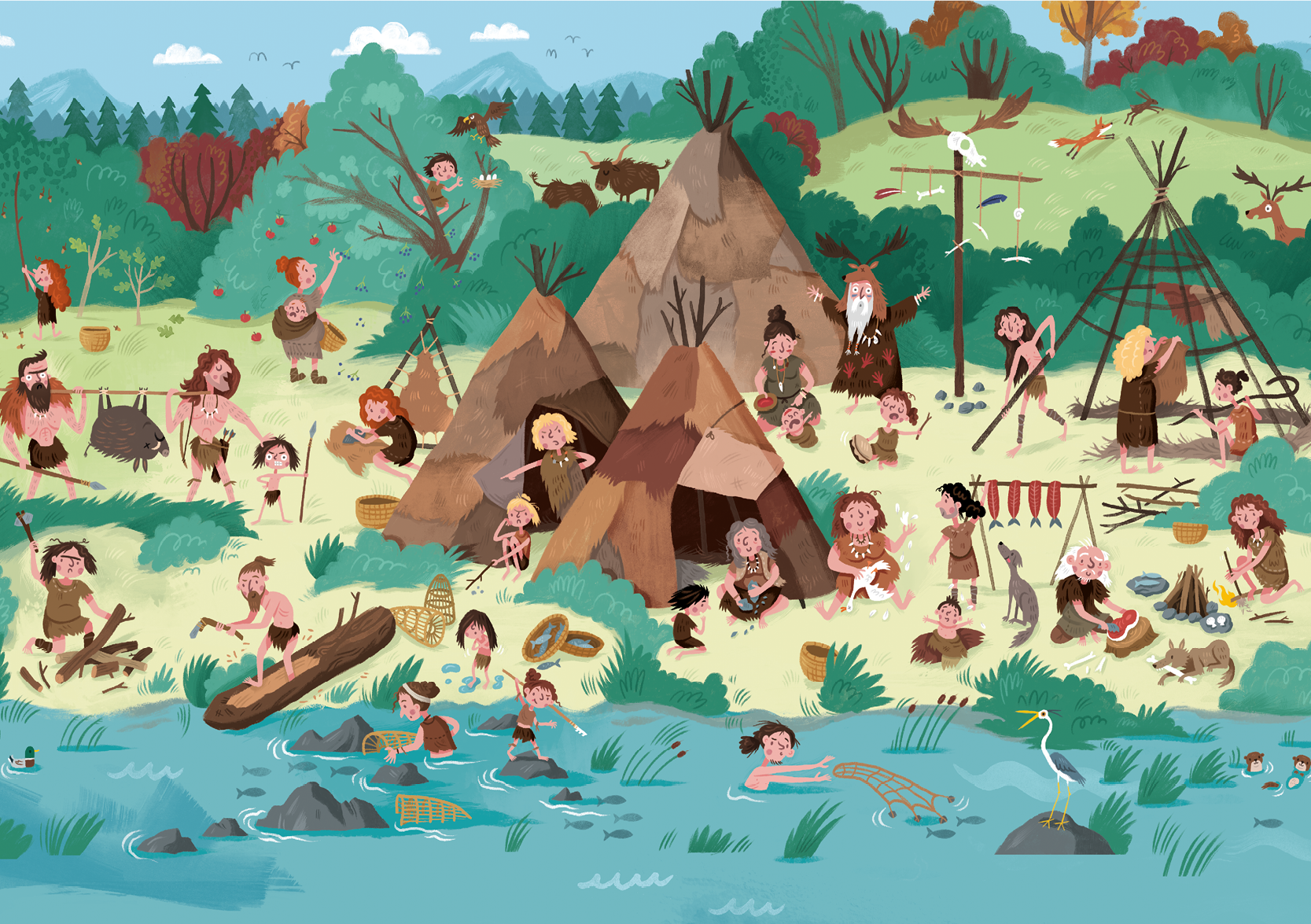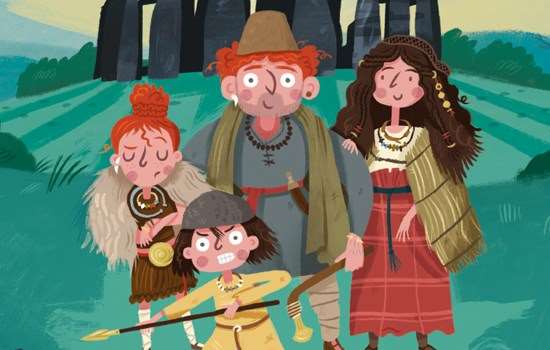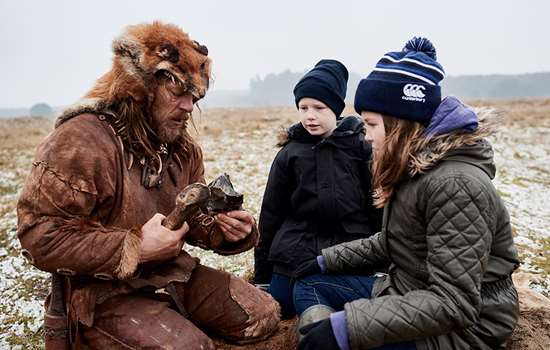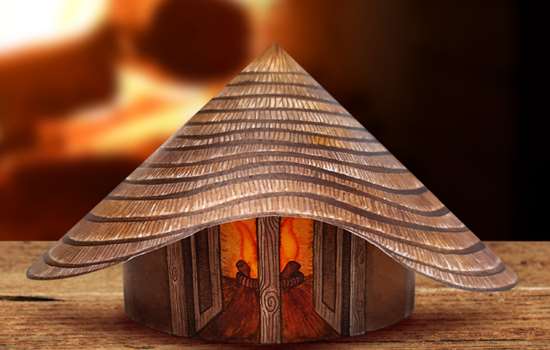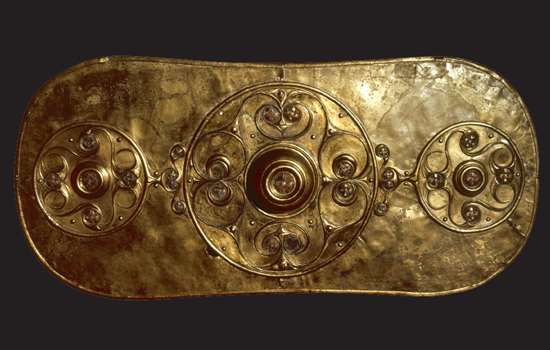It’s much easier to get food now than at any time in history – look in a shop and you will see many different foods on offer for people to buy. In prehistory, getting your dinner was a little trickier.
8,000 years ago, before farming came to Britain, people were called hunter-gatherers for a reason: if they wanted food, they had to hunt and gather it from the landscape around them. Have a look at the types of food on this page to find out what kinds of tasty things people were tucking into in the Stone Age.
It's dinnertime in the Stone Age, but what's on the menu? Click below to download a colouring sheet and use pencils, pens or paints to create your own scene!
What's on the menu?
-
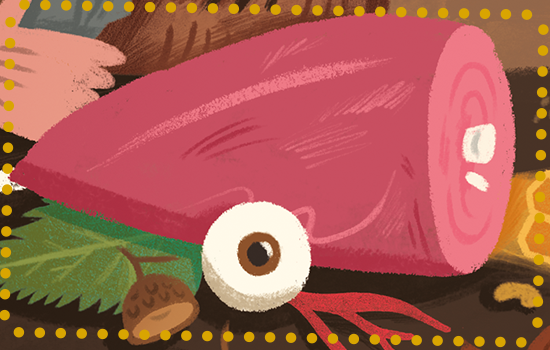
Meat
Eating meat meant sharpening a spear and going out to hunt a wild boar, deer or aurochs (giant wild cows). People weren’t fussy either: all the guts and eyeballs were eaten too!
-

Fish
People who were living near a river or the sea would have tried their best to catch fish using elaborate fish traps, and hooks and nets. Shellfish like crabs would also have been on the menu.
-
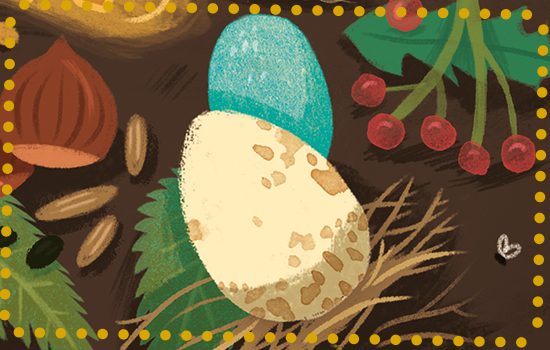
Eggs and Honey
Hunter gatherers would have eaten whatever wild birds’ eggs (or birds) they could find. When they weren’t raiding nests, they also raided bee hives to collect honey.
-
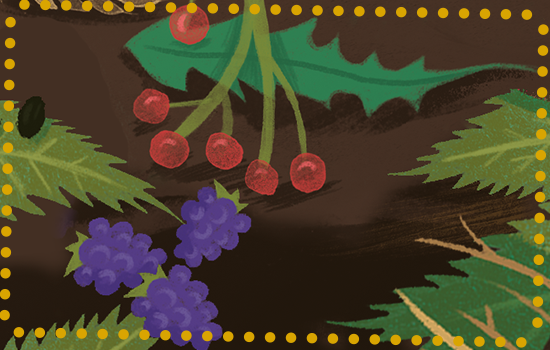
Fruits and plants
Foods that didn’t run or swim needed to be gathered, including plants like nettles, dandelion leaves and mushrooms. Fruits like plums and wild berries would have made a tasty treat in autumn.
-
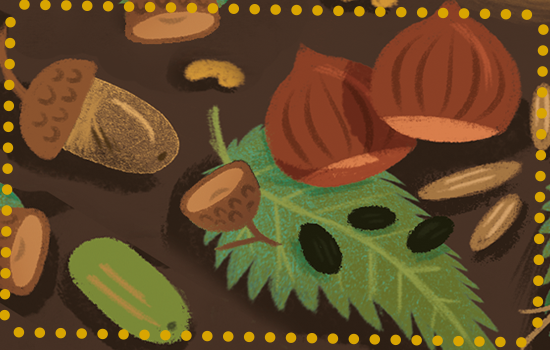
Nuts
Prehistoric people ate a lot of nuts, including hazelnuts and acorns, to get the protein and natural fat they needed in their diet. Wild grass seeds could be pounded to make a gruel or porridge.
-
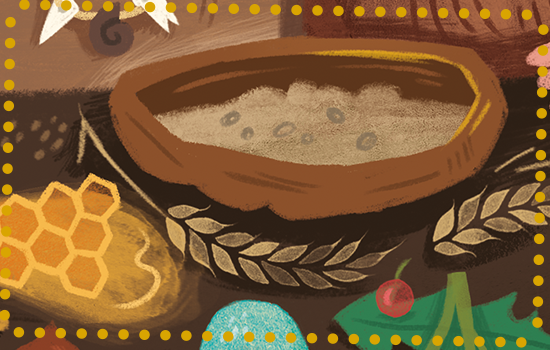
On the farm
From about 6,000 years ago, people in Britain started farming. They grew crops like wheat and kept cows and goats for milk and cheese, though many foods were still hunted and gathered.
Over to you...
It’s 8000 BC, and this tribe have set up their camp by a river. People would have lived a nomadic lifestyle, moving from place to place and hunting, fishing and gathering food as they moved around.
Could you survive as a hunter-gatherer? See if you can answer these questions to find out! (Answers at the bottom of this page)
- Why do you think they chose this location for their camp?
- What food can you see them hunting for or collecting?
Tip: hover over the image with your mouse to zoom in!
Personal challenge: imagine only eating food you can find in the wild. Make a list of your 10 favourite foods you would miss – could you give them up?
Interview with a Stone Age Man at Grime's Graves
We sent English Heritage Members Flo and Alfie Tyrrell to Grime’s Graves, a neolithic flint mine in North Norfolk, to meet prehistoric survival expert Will Lord and learn about what life was like here in the Stone Age.
Watch the video to discover how Grime’s Graves got its name, how the miners saw what they were doing underground, where prehistoric people slept and where they went to the toilet. Will even tells his favourite prehistoric joke!
Watch the videoYou are what you eat!
How do archaeologists know what people ate over 4,000 years ago? Evidence can be gathered from food remains at archaeological sites, and by analysing human bones, teeth and preserved poo, called coprolites (pictured).
Evidence found on teeth can give scientists a lot of information about the types of food people were eating in the past. Tooth decay is the result of eating too many starchy crops made from grains like wheat or too much sugar. Gritty, fibrous or hard foods can wear teeth down gradually over time, and plaque (which was common before the invention of the toothbrush) can preserve tiny fragments of food.
By measuring the amounts of carbon and nitrogen in human bones, scientists can tell whether a person was eating mostly shellfish and fish or land animals, and whether they had a vegetarian, meat or mixed diet. Sometimes, when a body is preserved in ice, in a peat bog, or by mummification, the contents of their stomach can survive. Ötzi, a Bronze Age man whose mummy was found in an Alpine glacier, had eaten preserved goat meat for his last meal.

